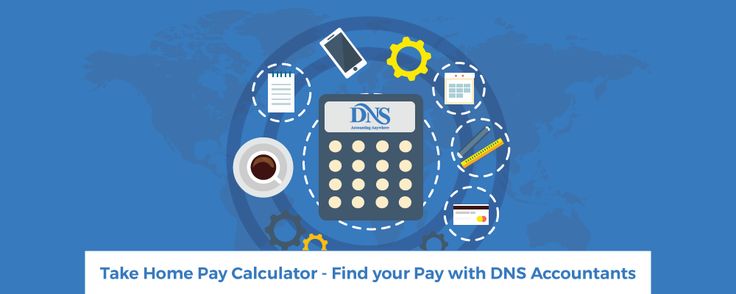Take-Home-Paycheck Calculator - Calculatorall.com
Use this take-home-paycheck calculator for determining your actual bring-home income after deduction of all taxes and any other fees from your salary. Remember that this take-home-paycheck calculator is intended only for US residents. It shows results according to the tax brackets of yesteryears.
Income
In US, income refers to before- or after-tax income. While the before-tax income is usually used by most of the people while making comparisons and also in their conversations, the after-tax income gives more meaningful alternative. In fact, the latter is the amount that can be used for any of your expenses. The figures that are used in the Annual Income (salary) represent your before-tax income and are referred to as your gross pay.
The employers withhold the taxes and any deductions automatically from the paychecks of their employees. However, when it comes to the self-employed individuals or the independent contractors, it’s their responsibility to submit their quarterly/yearly tax payments.
Pay Frequency
Certain states may have some requirements for pay frequency as well and it would be in your own interest to abide by the state regulations. Both state and federal laws require that pay should be released according to predicable, routine streams. There is no effect of pay periods on the tax liability, however.
The commonly used pay frequency is weekly, semi-monthly, bi-weekly and monthly. Here it is important to mention how bi-weekly payments are different from semi-monthly payments. Even though both the options appear to be same in the first look, bi-weekly payments are not date-dependent rather they happen every next week no matter what the dates are. Furthermore, bi-weekly pay scheduled generates a couple of more paychecks every year as compared to the semi-monthly option.
Generally, the employees want to have more frequent payments because of immediate use and some underlying psychological factors. On the other hand, employers always want to pay as less frequently as possible because of the costs associated with individual payments being released.
Even though the terms related to pay frequency are generally dictated by the employers, it’s for their best interest to decide on the terms that are mutually agreed upon with the employees.

File Status
Here some of the common options include 'Single', 'Head of the Household' and 'Married Filing Jointly'. Let's take a look at the IRS definitions for each of these options.
Single: It refers to not married, legally separated or divorced according to the state law.
Head Of The Household: It applies to those who aren't married and have paid above half of a household maintenance costs for themselves as well as some qualifying person.
Married Filing Jointly: It refers to married couples filing their returns together.
Married Filing Separately: Married couples can also choose to file their returns separately as well.
Qualified Widow: It's a filing status that requires one dependent child. Besides, the person can retain benefits related to the status 'Married Filing Jointly' for a couple of years after the death of the spouse.
Federal Allowances
The employees get W-4 forms from their employers for getting information regarding how much of the income tax amount can be withheld from their paychecks. Usually, individuals have to fill it out when they are starting new job. However, one must submit a new one in case of any changes to their financial or personal situations. Generally, if more allowances are claimed, less tax is withheld from every paycheck they get.
Monthly Deductions
Talk about any take-home-paycheck calculator and you'll find a required input in the form of monthly deductions. It should sum up all the additional deductions that have to be taken out from every paycheck before they reach you.
When calculating, however, only shared employees' costs should be used. Shared costs usually represent partial benefit costs which are a requirement of the employers to be shared by their employees. These include medical insurance, life insurance, dental insurance, and the disability insurance. A large number of employers offer 401l plans to match savings of their employees. In such cases, only the employees’ contributions should be used.
The Take-Home-Pay
The final take-home-paycheck can only be calculated after all these factors are accounted for. Determining this final value can turn out to be quite helpful and there are many reasons for that. One major reason to mention here is that when you know close estimate for all your regular paychecks it helps you in successful financial planning for the future.
The Take-Home-Pay
As mentioned in the beginning, this take-home-paycheck calculator is based on the tax brackets of last couple of years and, therefore, the results shown reflect the variables for 2016 and 2017.
The take-home-paycheck calculator requires you to provide the details like annual income, pay frequency (choose from eight different options), file status, number of the federal allowances, any monthly deductions, tax rate in the state, tax rate in the city and whether you are self-employed or not.
Hit the calculate button after providing all these details and the calculator will give you the annual figures for your take-home-paycheck and then there is a table representing your gross pay, federal income tax, social security tax, medicare tax, state and city income taxes, deductions and the final paycheck. The tables represent numbers for 2016 and 2017 as said earlier.
So, if you want to calculate the take-home-pay with all the additional information mentioned above, use this take-home-paycheck calculator and get detailed insights into what you earn every year, what amount is deducted from your pay and what is your take-home income that you can be able to spend on yourself and your responsibilities.